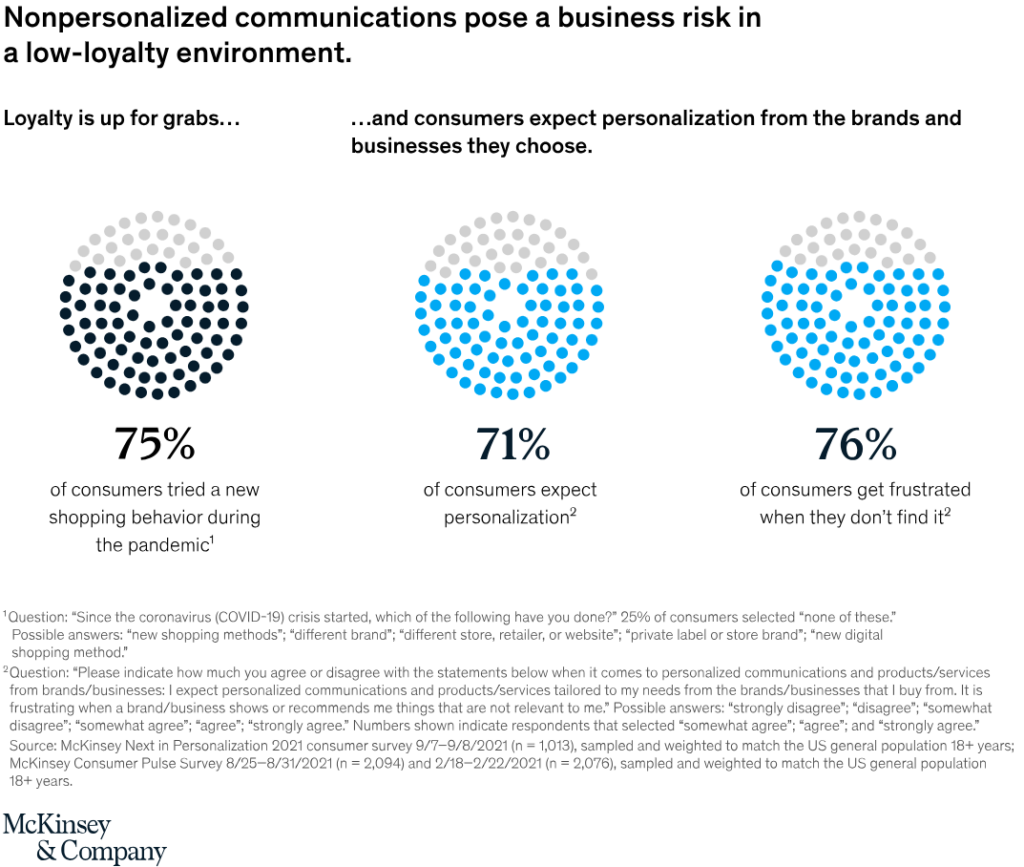Table of Contents
Today, more than ever, consumers are bombarded with messages from all corners. Gone are the days when one-size-fits-all worked for a brand. To connect with an audience meaningfully, any business needs to craft communications and experiences that are personal and relevant. This is where customer segmentation really works its magic: segmenting discrete groups of an audience based on particular characteristics gives a brand the power to craft marketing strategies that can resonate so much more deeply.
Why Personalisation is no Longer Optional
Today’s customer expects more than ever from the brands they interact with. That means, among other things, a need for them to feel understood and appreciated, and that equates to receiving marketing messages relevant to them. In fact, 71% of consumers today expect a personalised experience, with many openly admitting to getting frustrated when brands blow it.
Personalisation is no longer a nicety; it’s a necessity. If done right, personalisation nurtures connections and helps build trust, driving conversions. But one cannot do personalised marketing without profound knowledge of the audience, and this is where customer segmentation comes into effect.
Image Credit: McKinsey & Company – The value of getting personalization right—or wrong—is multiplying
What is Customer Segmentation?
Essentially, customer segmentation means separating your customers into small groups based on some common traits among them. These can be demographic traits like age, gender, and location; behavioural traits like purchase history and browsing patterns; or psychographic traits that include lifestyle, values, and interests.
Segmentation enables the brand to slice into big, diverse audiences groups that are more manageable with which to craft messages that will speak very specifically to the needs and desires of each group. For instance, a skin care brand may need to sell anti-ageing products to older customers and acne treatments to a younger audience. It is about relevance, and segmentation helps you get there.
You can read more about the process and importance of segmentation on Brandspeak’s Customer Segmentation Research page.
The Benefits of Segmentation for Brands
Segmentation is much more than a buzzword. It’s a powerful tool that can help brands sharpen their marketing strategies in a number of ways:
- More Targeted Messaging: With better targeted messaging segmentation, one can speak more precisely to the needs of the audience. Rather than publishing generic messages to your entire list, you can create content that tends to address the needs and interests of each segment. A travel company may want to make young professionals aware of budget travel deals while targeting high-income families with luxury holiday offers.
- Efficiency in the Use of Resources: Each brand wants to get the most value from their marketing budget, and that is where segmentation comes in. By identifying high-value customer segments, you will know where to allocate resources for maximum effect. Targeted campaigns translate into less waste and higher efficiency.
- Stronger customer relationships: Consumers today do not look for just a product or service but a relationship with the brands they patronise. This means segmentation lets you know your customers on a much deeper level and thus communicate with them personally and thoughtfully. This level of personalisation fosters loyalty, in turn contributing to higher retention rates.
- Improved Customer Retention: It is infinitely cheaper to retain one customer than to gain a new one. Segmentation allows you to keep a close eye on customer behaviour and thus design appropriate marketing strategies that keep their attention and interest. A personalised discount or even a ‘we miss you’ email would do the trick if a customer hasn’t ordered in a long while.
- Informed Decision Making: Segmentation is based on data, and that data will have much to say about what drives your customers. Whether it is their purchasing behaviour or the content they create that should help drive your marketing strategy and create better-informed decisions on how to engage your audience.
Personalisation in Action
Let me illustrate this with an example. Suppose you operate a small bakery outlet in the UK, whose clients range from busy working professionals to families with toddlers and young children. Applying segmentation may reveal that the office workers, who must commute daily, particularly like the morning coffee and croissant deal. Knowing this, one can develop an early bird offer for this type of customer by instituting a discount before 9 am.
On the other hand, it may be that families prefer larger family-sized portions and weekend treats. If you can target this group with your marketing messages at weekends, offering family-sized cakes, for example, or discounts for children’s birthday cakes, you are far more likely to receive positive responses. Both groups are receiving different marketing messages, yet both are made to feel valued and understood.
Why Customer Segmentation is a Must
Today, it’s not just a matter of casting a wide net and hoping to catch a few customers. Brands today have to get personal if they want to thrive. Customer segmentation lets businesses understand their audience on a deeper level and thus provide targeted, personalised marketing that speaks directly to their customers’ needs.
In the competitive landscape, segmentation is a powerful tool. With the help of segmentation, businesses can connect meaningfully, boost engagement, and drive growth.
To read more about the benefits of customer segmentation, refer to Brandspeak’s Customer Segmentation Research and learn how your brand can benefit from a more targeted approach.








